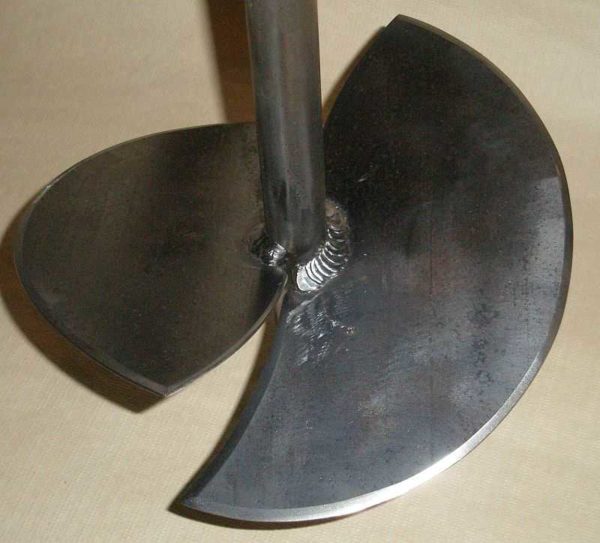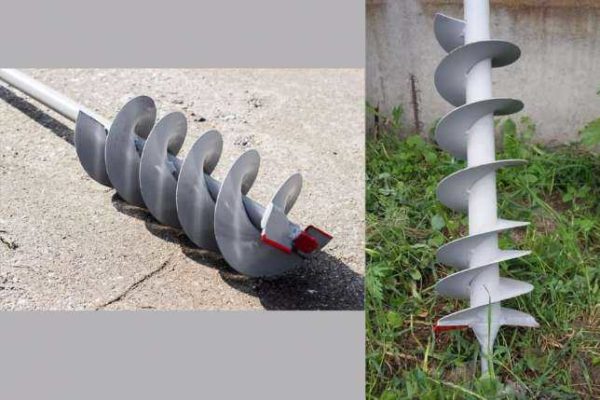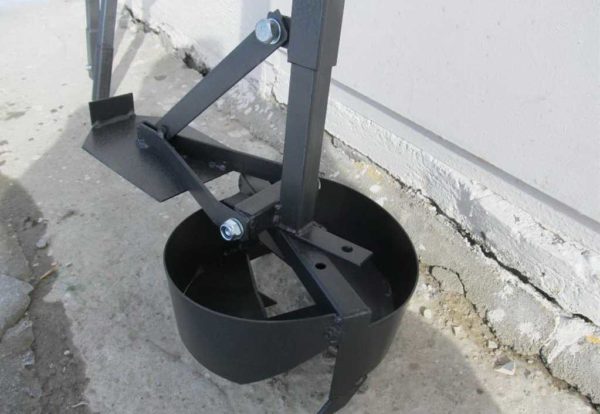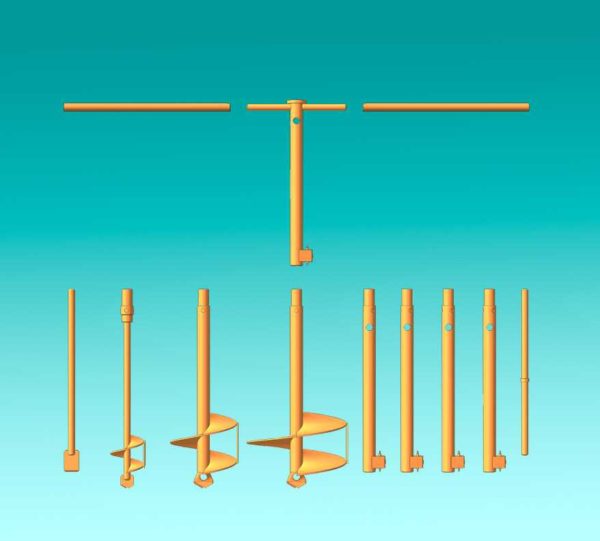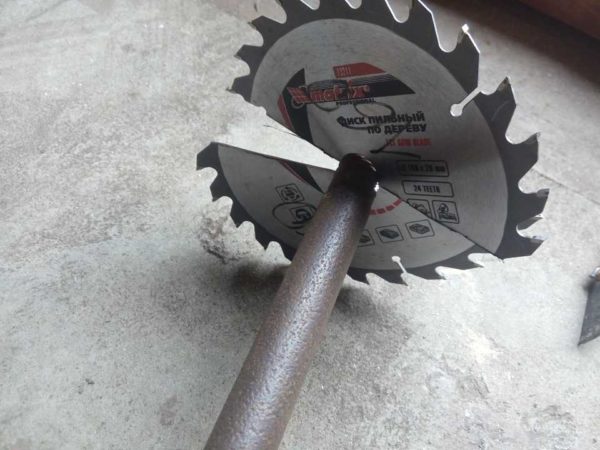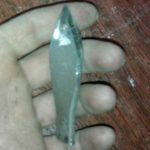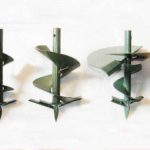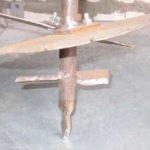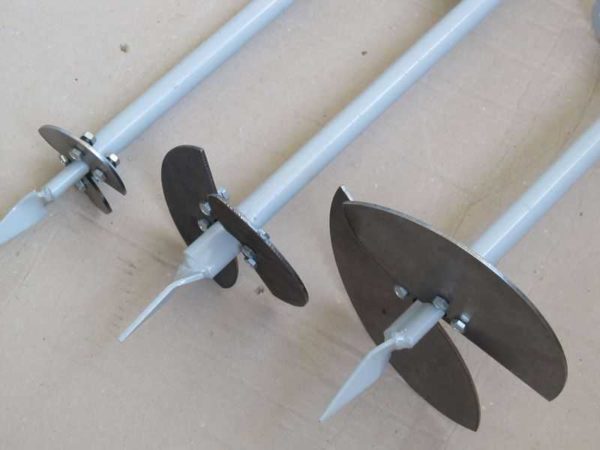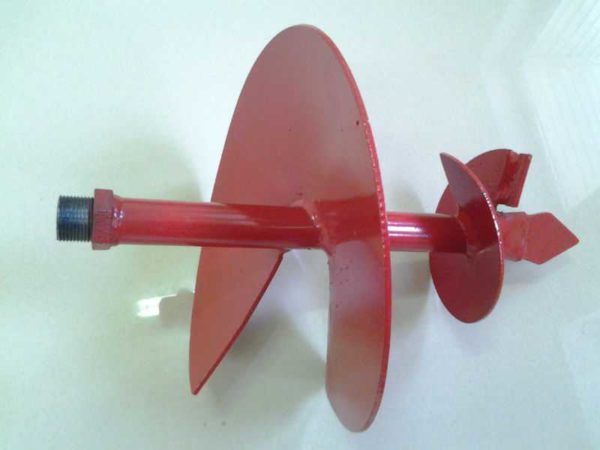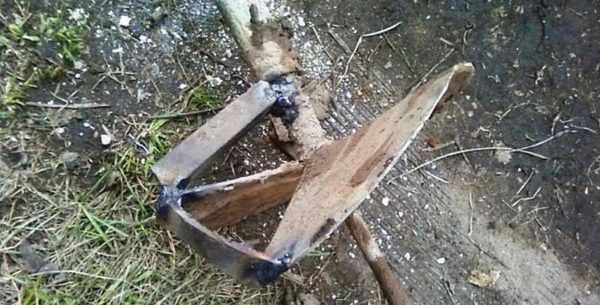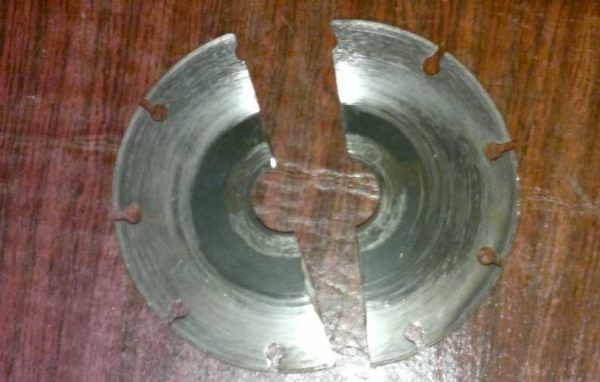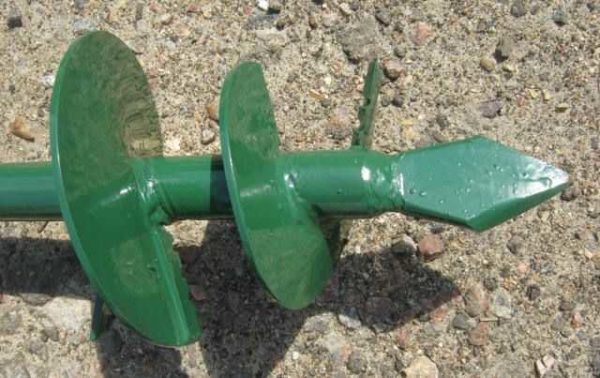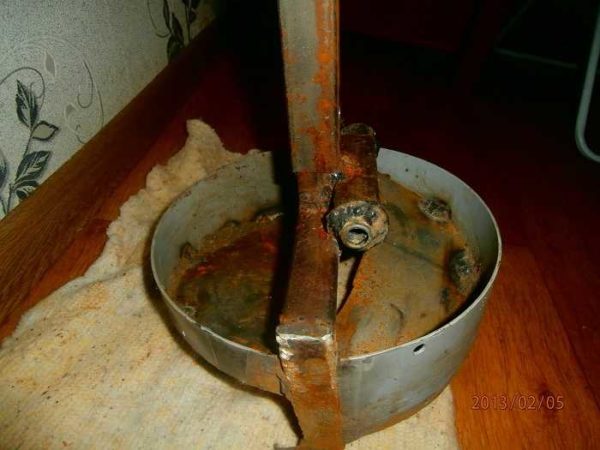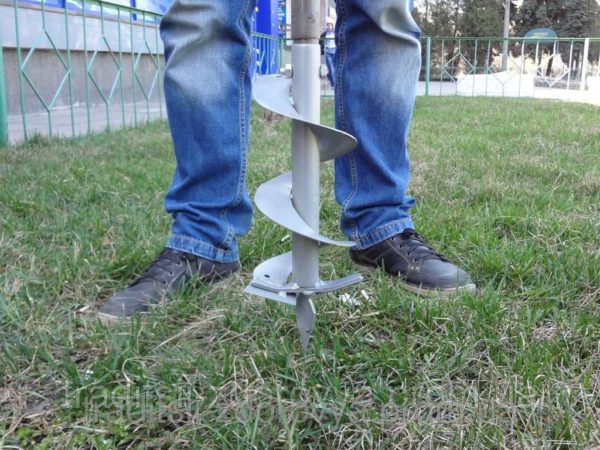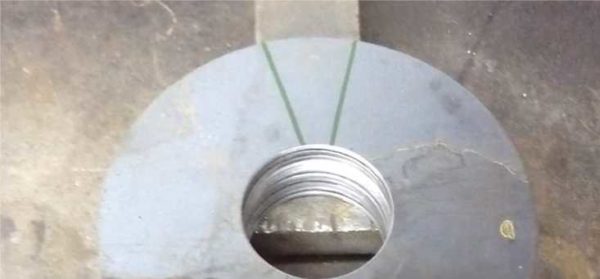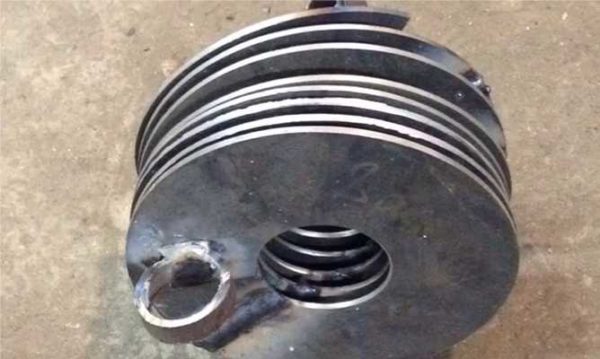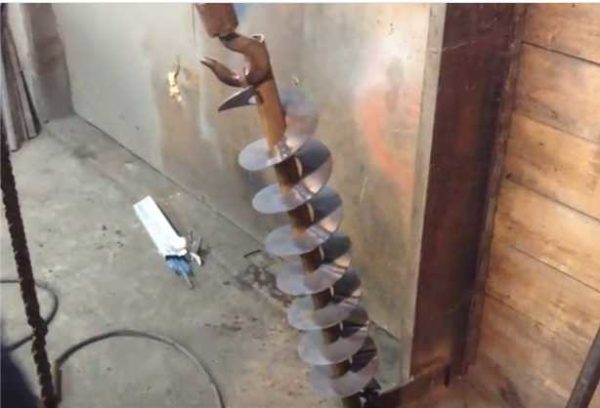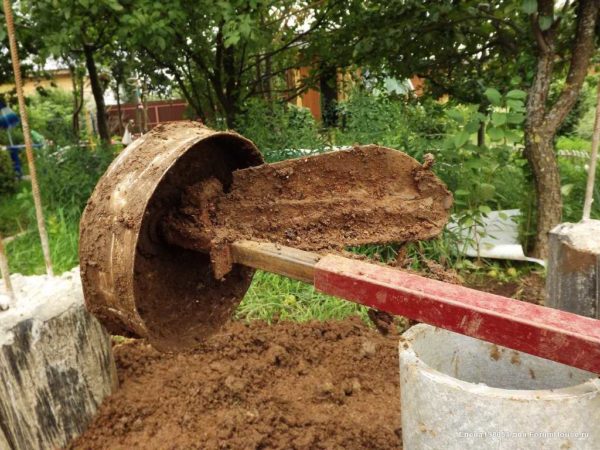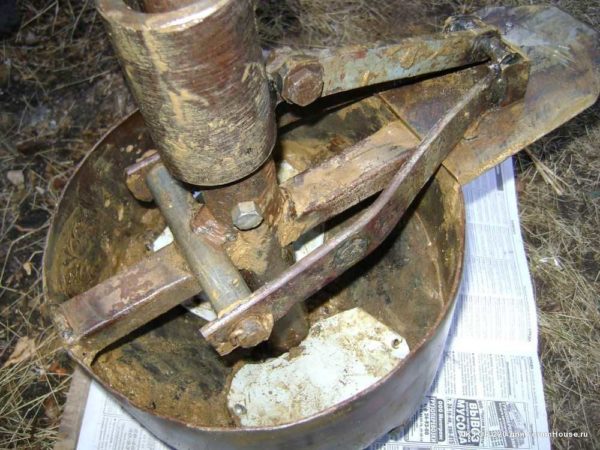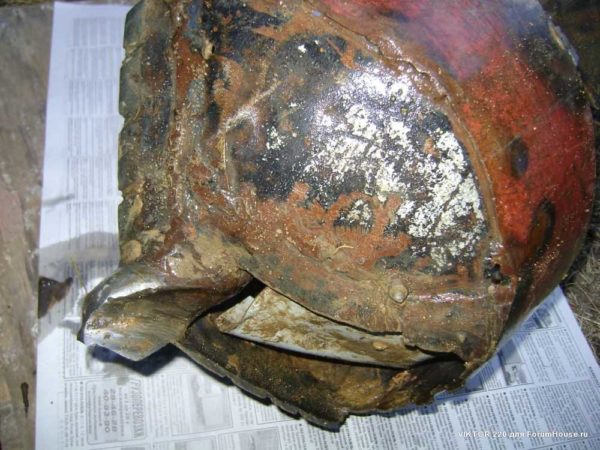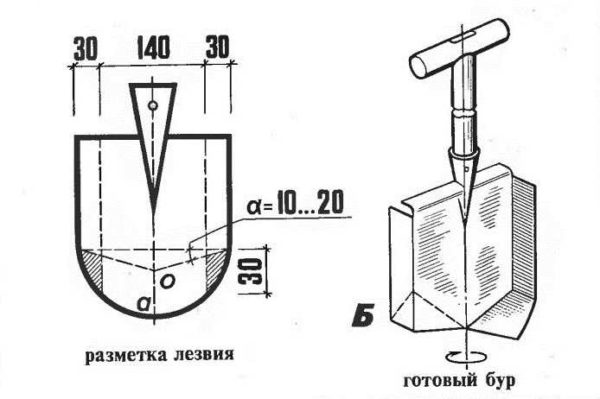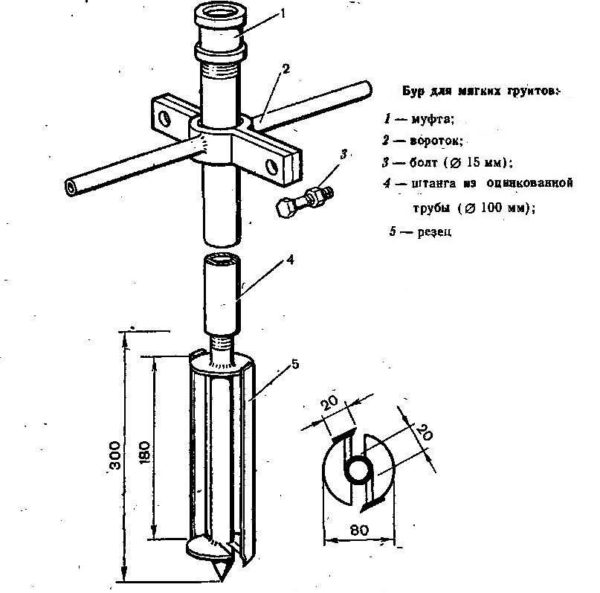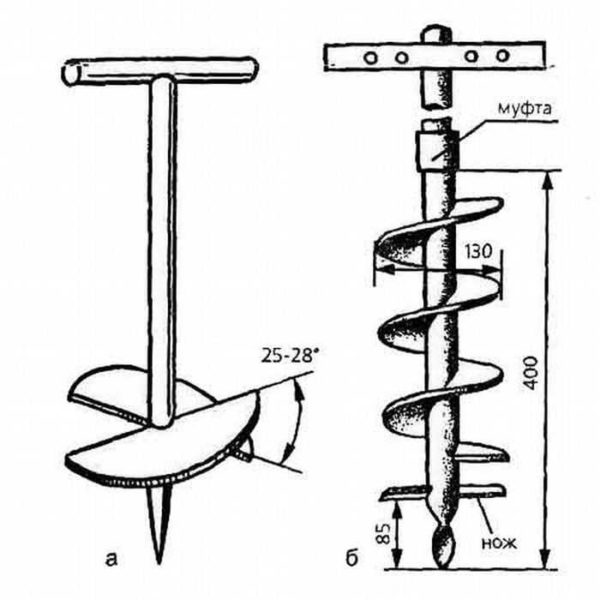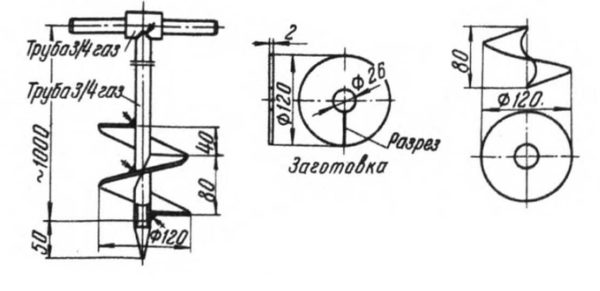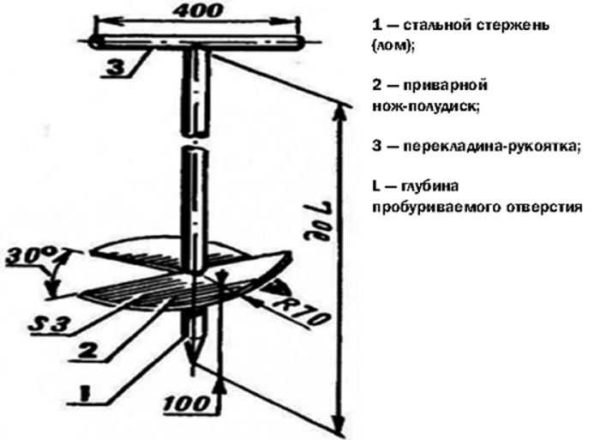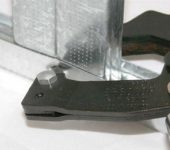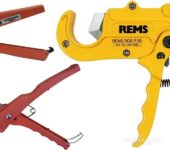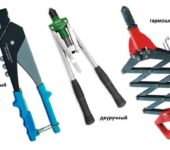How to make a homemade earth drill (yamobur, earth drill)
When building a house and arranging a site, it is often required to make round holes in the ground. They are needed when arranging a fence - for installing poles, when building gazebos, installing arches and other light utility structures. The same pits, but a larger diameter and depth are required for the device pile foundation... These pits are made with a motorized or hand drill. There are enough of them in stores, but many prefer homemade products: they are often more productive and reliable than factory products. In addition, a drill with your own hands can be made of any design, and there are many of them.
The content of the article
Designs and application
There are three main designs of earth drills:
- Garden. Usually these are two semicircular blades welded at an angle to one another. A hand-held drill of this design is used to organize holes for planting plants, from which it is called "garden". But with the same tool, pits are made when installing poles for fences, gazebos and other light buildings.
- Auger drill. It differs in that it has a longer cutting part. It is used for the same purpose - to make holes for posts. Due to its design - the longer cutting section - it needs to be pulled out less often, so drilling is usually faster.
- Drill for piles TISE... This structure is similar to a garden auger, but has an additional reclining blade to form an expansion at the bottom of the pile, typical of this type of foundation.
Garden earth drills, which are easier to make. Depending on the type of soil on which drilling is carried out, their structure is slightly modified. This is the beauty of home-made drills - they can be "sharpened" for specific conditions and it's not only about the size - the blades can be made removable, bolted, but also in the design features. Yes, regular borax in the store are inexpensive, but they are "universal". They work well on "light" soils. " On loams, clays, marls, etc. they are ineffective.
Making a garden drill
A garden drill is the simplest but most effective design. It consists of:
- Cutting part. It usually consists of two steel semicircles with sharpened edges. The diameter of the blades is selected depending on the diameter of the holes that need to be drilled. For convenience, the blades can be made removable - bolted.
- Kernel. It is a round or profiled tube (square). Scrap can also be used, but it is very heavy and difficult to work with. The length of the rod is the required pit depth plus 50-60 cm. If it is made shorter, then the last centimeters will have to be drilled in a deep slope, which is not at all easy. If, with this calculation, the total height is higher than 1.5 meters, it makes sense to make a collapsible bar. Then the rod is built up with pipe sections of the same diameter, having come up with a joint system.
- A pen. Most often, a crossbar in the form of a T is welded to the rod. The length of the handle is minimum - 40 cm, the optimal one is about 50-60 cm.
- Drill bit. This is the part under the blades. She is the first to loosen the ground, and at the initial stage is responsible for centering the drill - it is easier to hold it vertically.
This is a basic design, and there are many improvements to it. But first, let's talk about what a ground drill can be made of.
Materials
As already mentioned, the rod is most often made from a round or square pipe. Diameter - from 3/4 'to 1.5', profiled pipe can be taken from 20 * 20 mm to 35 * 35 mm.
Blade knives can be made from:
- sheet steel with a thickness of 4 mm;
- a saw blade for a grinder of a suitable diameter.
It is easier to make blades from a saw blade. In this case, the cutting edges are already prepared. It will be possible to additionally sharpen the side edges so that the soil is cut easier.
A pico drill is made of different materials - there are a lot of its designs. They just make a sharpened rod. Then you need a section of a large diameter bar. The second option is to make something like a drill from a strip of steel. And yet - a combination of the two.
- Steel strip earth drill bit
- Pica - one of the tip options
- Combi tip for crushing rocks
And finally, about the pen. It is more convenient if it is made of a round pipe. Its diameter can be selected according to the girth of the palms. The main requirement is that you should be comfortable.
Knives and method of mounting
First of all, you need to decide whether you are making a drill with your own hands with removable or stationary blades. If the blades are removable, weld thick steel shelves at one end of the rod. The shelves are made at an angle - so that the planes of the knives are divorced at an angle of 25-30 °.
After the shelves have been welded, two or three holes are made in them - for fasteners. Then the same holes will have to be made in the blades, and they will be installed on bolts of solid diameter.
In the discs themselves, holes will have to be cut in the center - so that they fit more tightly to the rod, but this operation is also required in the monolithic version - with welded blades.
Sheet steel
If you are going to make the blades from sheet steel, cut out a template from paper, along it - a circle of steel. Drill a hole in the center - a rod will need to be inserted and welded into it. Circle or square - depending on the selected bar. The hole dimensions are slightly larger than the rod dimensions.
Next, you need to decide how you will make the blades - from two halves of a circle (as in the photo above) or in the form of an open circle with offset edges - one turn of the spiral (in the photo below).
It is also necessary to part the edges by 25-30 ° degrees. In this case, the drilling efficiency will be maximized. If you work on dense soils (clay, loams with a predominance of clay), the blades can be brought together under load. To avoid this, stops are added from a corner or a thick strip of steel.
The blades are bent due to the fact that the steel is used unhardened, but it is almost impossible to find it in the sheet, and if it is possible, then it will hardly be possible to bend it.
From the saw blade
If you have an old saw blade of a suitable diameter, you have found an almost perfect option. They use hardened steel, but it is elastic and strong. But such a disc cannot be bent, therefore it is cut in half and these halves are bred at the required angle.
Such a homemade drill for earthworks shows a fairly high productivity. Even used discs have a well-sharpened edge. And to make drilling even easier, the drill is also sharpened on the sides with their own hands.
Modifications
In dense soils, it can be difficult to cut the soil with large blades. In this case, several blades of different sizes are welded onto the rod. Below, near the peak, the smallest are welded, higher, retreating a few centimeters - the large ones. There can be three such tiers, maximum four.The entire cutting part should not be more than 50 cm, otherwise it is physically very difficult to work.
If a drill is needed for shallow pits - for installing poles, etc., then such a design is optimal - it has a relatively low weight, it is easy to work with it. The process of work is as follows - they lowered it into the hole, turned it several times - pulled out, poured out the soil stuck between the blades. But if you need to drill deep holes, you will be tortured to drag a small amount of soil from the depth. For such cases, a box for collecting soil is welded over the blades.
And all these are handmade boers. All of them are highly efficient - it is much easier to work than purchased ones.
Auger drill
The auger drill, due to the large number of turns, creates significant resistance, that is, it is much more difficult to work with it than a garden drill. But augers are used mainly in the presence of a mechanized drive - when they do deep hole drill - on water, devices of underground probes for a heat pump, etc.
To make a homemade auger drill, you will need several metal discs. The number of disks is equal to the number of turns. The discs are cut out the same, in them, in the center, a hole for the rod is cut out, as well as the same sector - so that they can be welded.
The discs are welded on one side, then, slightly stretching the resulting accordion, the seam is welded on the other side. Rings are welded on the outer discs. The welded discs are put on the rod, the lower edge is welded.
Next, you need a winch. The workpiece for the auger is fixed, the winch hook clings to the ring and stretches to the desired length, after which the auger is boiled.
Drill for piles TISE
In the author's version, the TISE drill is a blade with a soil receiver and a wider folding knife, which forms an extension in the lower part of the pile. But working with such a projectile is inconvenient - a folding knife interferes greatly. Therefore, in some structures it is made removable, but in general, it is recommended to drill the pits themselves with an ordinary garden drill, and to expand it, make a separate folding knife with a land receiver. This makes the work easier and faster.
A cut-off shovel acts as a knife here, and the land receiver is made from a herring can. The knife is fixed movably, when lowered into the pit, it is pulled up by a nylon cable tied to the end. Having reached the bottom, the cable is weakened, the blade begins to cut the sides of the pit, forming the necessary expansion.
The photo below shows the second version of a homemade drill for TISE piles. The design is more complex, but also more efficient. The plow blade is made from a piece of spring, sharpened and welded to the folding structure on bolted connections.
Dredger - from an old propane tank. The soil is collected from the bottom, because the receiver is made with a rounded bottom. It has two holes, their edges are sharpened.
This shell works well even on dense clay. True, to reduce friction, the well must be constantly wetted with water.
Blueprints
A self-made drill is good because its design is "sharpened" for the owner. In the manufacturing process, everyone makes their own changes, then many more modify the product. But it can be difficult to do without basic drawings. This grave contains several drawings with dimensions of various drills. As you can imagine, the dimensions are conditional, they can and should be changed, adjusting to the dimensions of the required wells.
Shovel drill
It makes no sense to make a serious structure for planting plants. In this case, you can make a garden drill from a shovel.They choose a high-quality shovel made of good steel, apply the markings, as shown in the drawing. According to the markings, you will need to cut out two small fragments, cut the lower part in the middle to a depth of 30 cm (pictured).
Further, the edges are bent one forward, the other back, the petals formed in the lower part are bent to them. Received weld the seams outside and inside.
Drill for soft soils
If the ground is soft, conventional construction does not work well. For such cases, there is a special drill with an extended cutting part. It is a kind of glass with slits on the sides. The cuts are provided with cutting edges. They are best made from well hardened steel.
This drawing shows an interesting handle design - it can be rearranged as the length of the rod increases.
Basic drawings of auger and garden auger
Both of these units work well, but the garden unit has to be removed often, and the auger is harder to rotate. Choose according to your own preferences.
Video materials

